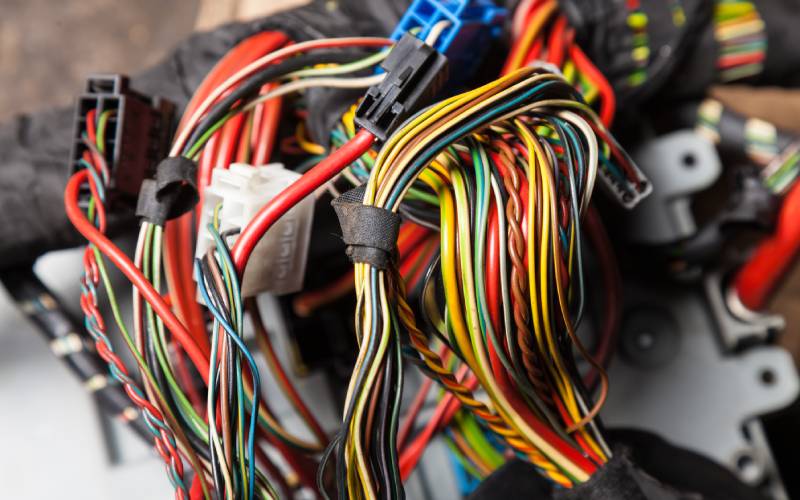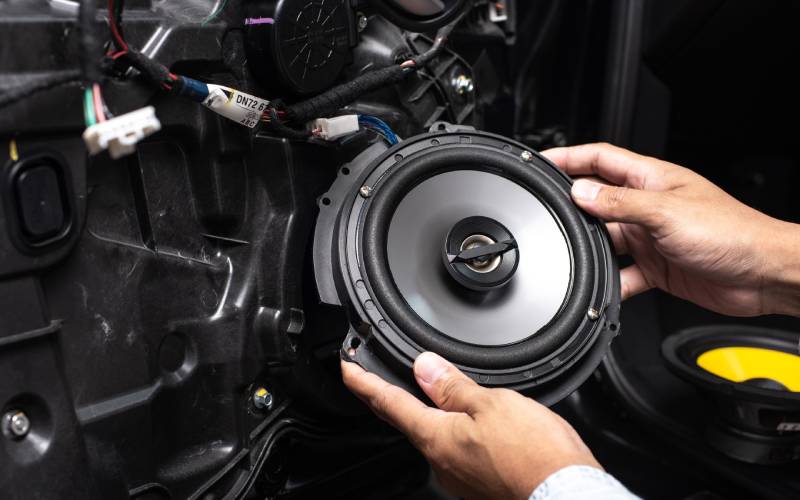The Role of Pigtail Connectors in Vehicle Reliability
The Role of Pigtail Connectors in Vehicle Reliability

For professionals in the automotive industry, the ability to design systems that maintain peak performance under the harshest conditions is a necessity. This is where pigtail connectors become crucial.
This article explores the role of pigtail connectors in vehicle reliability and highlights the best practices for choosing connectors that will ensure long-term durability and performance. Keep reading to learn how they factor into reliability and why they are a nonnegotiable component in modern automotive systems.
What Are Pigtail Connectors?
Pigtail connectors are short lengths of wire pre-attached to electrical connectors, with a second end left unconnected for custom installations. They act as a bridge between electrical circuits, effectively connecting a specific system or component to the broader wiring architecture.
Pigtail connectors are widely used for automotive systems because they simplify the integration process while ensuring secure and stable connections. Their versatility allows them to accommodate a range of applications from lighting systems to engine control units.
However, the true value of pigtail connectors lies in their reliability. Poorly connected circuits are often plagued with performance issues, from intermittent signals to complete electrical failure. Component manufacturers and engineers reduce such risks by integrating high-quality pigtail connectors.

The Role of Pigtail Connectors in Preventing Electrical Failures
Electrical failures are one of the main causes of vehicle malfunctions, accounting for millions in repair costs annually. Preventing such issues depends heavily on the strength and reliability of the connections within the vehicle’s wiring system. This is where pigtail connectors excel. They create stable links that guard against common disruptions such as vibration, moisture ingress, and thermal cycling.
Automobiles face constant movement, from engine vibrations to road-induced jolting. These factors can loosen traditional wiring connections, but pigtail connectors are structurally designed to withstand such forces. Their pre-crimped and pre-tested nature offers a level of connection integrity that ensures continuity even under extreme conditions.
Moisture and contaminants are another enemy of vehicle wiring systems. For instance, poorly insulated connections lead to corrosion, short circuits, and costly breakdowns. High-performance pigtail connectors are constructed with protective seals and materials to resist exposure to such hazards over time.
Thermal stress in an engine compartment can cause some materials to expand or weaken. However, premium pigtail connectors use high-temperature-resistant materials to maintain structural stability and performance, even in extreme heat environments. Overall, these connectors mitigate risks that would otherwise render key vehicle functions vulnerable.
Applications of Pigtail Connectors in Key Vehicle Systems
To fully appreciate their importance, it’s critical to examine how pigtail connectors operate in major automotive systems.
Lighting and Indicator Systems
Lighting systems depend entirely on seamless electrical connections for consistent performance. From headlights to taillights, a failure in connectivity can compromise driving safety, leaving operators unable to see the road clearly or signal effectively to other drivers. Pigtail connectors ensure signal continuity by providing strong, stable wiring connections between lighting components and the vehicle’s broader electrical network.
Many automotive suppliers rely on pigtail connectors for lighting because they simplify repairs. If a particular light assembly needs to be replaced, the connector allows technicians to swap out components without redoing the vehicle’s broader wiring structure.
Sensors and Electronic Control Modules
Modern vehicles rely on many sensors and modules for efficient operation. These components measure everything from oxygen levels to throttle positions, each requiring robust connections to influence the vehicle’s operation. Poor wiring in these systems leads to inaccurate readings and reduced efficiency. Pigtail connectors prevent such failures by offering reliable, stress-free connections.
Furthermore, using secured pigtails minimizes the possibility of disconnections due to engine vibrations. This is particularly critical in systems for emissions control and fuel management, where consistent electrical input is nonnegotiable.
Engine and Transmission Systems
Pigtail connectors are also vital in enhancing the reliability of high-performance systems such as engine and transmission assemblies. Unlike standard wiring connections, they provide improved resistance to the heat and vibrations that occur under the hood. They make it easier for manufacturers to apply uniformly high-quality connectors for automotive wiring.
Engineers can trust pigtail connections to deliver consistent power and signal transfer if an application involves fuel injectors or solenoids.
Communication and Entertainment Systems
With vehicles increasingly featuring advanced infotainment systems, the complexity of automotive wiring has reached new heights. Pigtail connectors are pivotal in managing these systems by creating flexible and manageable wiring setups.
Shielded pigtail connectors are often implemented to minimize electromagnetic interference for communication systems, such as onboard diagnostics or IoT-integrated dashboard displays. Their ability to reduce noise within the wiring architecture ensures that data transfer remains reliable, faster, and uninterrupted.

Choosing the Right Pigtail Connectors
Selecting the right pigtail connectors for a specific application directly impacts your vehicle's reliability. With countless options available, evaluating your connectors based on a few critical factors is important.
Material Properties
Choosing connectors made of high-grade materials is essential when considering durability. Copper is a widely recommended material for wiring applications for its superior conductivity. Thermoplastic or elastomer insulation offers excellent flexibility, preventing cracks and breaks over time.
Weatherproof Sealing
Moisture is the enemy of electrical connections. To ensure longevity, opt for connectors with robust sealing properties, particularly in areas susceptible to exposure—such as undercarriages or engine bays. Effective waterproof connectors are often rated with an IP (ingress protection) standard to ensure excellent resilience.
Testing and Certification
Any pigtail connector incorporated into an automotive system should meet specific certifications and undergo rigorous performance testing. Seek out connectors certified by organizations such as SAE or ISO, as these verify compliance with automotive-grade reliability standards.
Ease of Installation
No matter how high its quality is after installation, a product that’s difficult to install in the first place could introduce risk during implementation. Good pigtail connectors allow quick and straightforward installation while maintaining performance integrity. Verified pre-crimping processes further reinforce dependable use.
Investing in Pigtail Connectors for Enhanced Reliability
Investing in high-quality pigtail connectors is a proactive step toward improved vehicle performance and reliability. These compact yet resilient components safeguard against electrical failure, simplify maintenance procedures, and bolster critical systems across various automotive applications.
With automakers and suppliers increasingly emphasizing durable wiring solutions, those failing to recognize the importance of the role of pigtail connectors in vehicle reliability risk falling behind competitors. Consequently, procuring only trusted, industry-verified connectors for automotive wiring across all production lines is essential. With the right pintail connectors, automakers can create more reliable vehicles for consumers.

You must login to post comments.